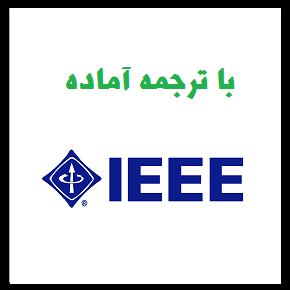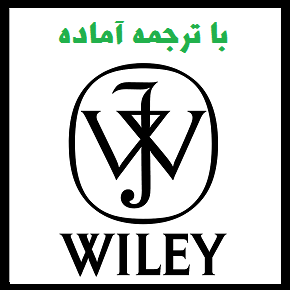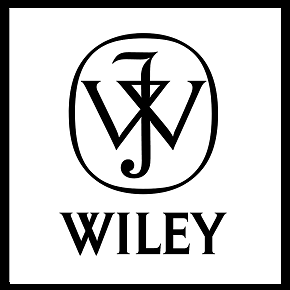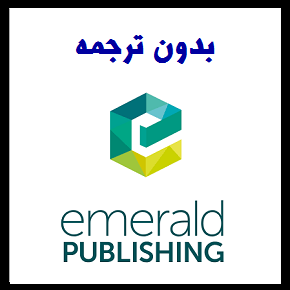مقاله انگلیسی اثر صدور مجوز در عملکرد نوآورانه در رژیم تکنولوژی (2016 الزویر)
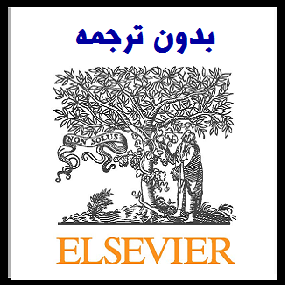

| عنوان فارسی مقاله | اثرات صدور مجوز در عملکرد نوآورانه در رژیم های تکنولوژیکی مختلف |
| عنوان انگلیسی مقاله | The effects of licensing-in on innovative performance in different technological regimes |
| نمونه ترجمه کامپیوتری | 1. مقدمه
ظهور بازار تکنولوژی تاثیر قابل توجهی در روند نوآوری شرکت ها از طریق تقسیم معاملات نوآورانه و تکنولوژی در این بازار دارد (Arora et al.، 2001a، 2001b). دیدگاه های سنتی در زمینه نوآوری، فرایند نوآوری را از لحاظ تولید ایده ها و تجارتی در نظر گرفته اند که به طور کامل با مرز آلودگی انجام می شود. با این حال، تکنولوژی روزافزون بازار به این معنی است که شرکت ها می توانند از مجوز استفاده از فناوری های خود بهره مند شوند و مجوز رسمی آن به یک پنجره دسترسی به فن آوری های خارجی تبدیل می شود (Arora et al.، 2013؛ Laursen et al.، 2010). به تازگی، ادبیات در زمینه فن آوری بازار، به طور عمده بر بازار عرضه شده است. طرف تقاضای بازار نیز توجه علمی به توضیح ماهیت بازار تکنولوژی دارد (مثلا Arora and Gambardella، 2010؛ Laursen et al.، 2010). از دیدگاه مجوز، مطالعات قبلی چندین دلیل را برای شرکت های پذیرفته شده در فن آوری های خارجی از طریق صدور مجوز پیشنهاد کرد. شرکت ها با مشارکت در صدور مجوز، می توانند ریسک ها و هزینه های مربوط به روند نوآوری را کاهش دهند، پیشرفت های تکنولوژیکی را کاهش دهند و تکنولوژی را تسهیل کنند. * نویسنده معتبر. آدرس های ایمیل: leejs@business.kaist.ac.kr (J.-S. Lee)، jihoonpark@business.kaist.ac.kr، jihoonpark@kaist.ac.kr (J.-H. Park)، ztbae @ business.kaist.ac.kr (Z.-T. Bae). یادگیری علمی (Atuahene-Gima، 1993؛ جانسون، 2002؛ Lowe و Taylor، 1998). علاوه بر این، شرکت ها گاهی به توافق مجوز برای به دست آوردن استانداردهای صنعتی یا آزادی تولید می پردازند (Grindley and Teece، 1997؛ Lowe and Crawford، 1984). مطالعات قبلی بررسی شده است که چگونه صدور مجوز در نتایج مختلف، مانند عملکرد مالی، نوآوری و سرعت اختراع تاثیر می گذارد (Laursen et al.، 2010؛ Leone and Reichstein، 2012؛ Tsai and Wang، 2007؛ Wang and Li-Ying، 2014 ؛ وانگ و همکاران، 2013a). علیرغم ادبیات قابل توجهی، ما اطمینان دادیم که ارزش موجود در برجسته کردن این است که آیا پذیرش فن آوری خارجی از طریق صدور مجوز، همیشه برای عملکرد نوآورانه سودمند است و زمانی که این اثر با توجه به محیط تکنولوژیک تقویت شود. در ابتدا، در پاسخ به نیاز دانشگاهی برای درک بهتر از سمت تقاضا برای بازار تکنولوژی، این مطالعه اثر درمان لیزینگ را بر عملکرد نوآورانه بررسی کرد (Arora and Gambardella، 2010؛ Kani & Motohashi، 2012). علاوه بر این، این مطالعه تلاش کرد تا به ادبیات در بازار تکنولوژی با شناسایی مرزها یا عوامل احتمالی زیست محیطی برای شیوه های صدور مجوز، سودمند برای عملکرد نوآورانه شرکت (به عنوان مثال، Lichtenthaler، 2011؛ Natalicchio و همکاران، 2014) . یک رژیم تکنولوژیک، یک محیط قابل توجهی را نشان می دهد که بر فعالیت های نوآورانه و عملکرد شرکت تاثیر می گذارد (Nelson and Winter، 1982). رژیم های تکنولوژیکی با سه بعد مشخص می شوند: فرصت های تکنولوژیکی، جمعیت و شرایط مناسب (Malerba and Orsenigo، 1993). ابعاد این سه بعدی بر فعالیت های نوآورانه شرکت تاثیر می گذارد و از شرکت در بازار برای تکنولوژی بهره مند می شوند. اثرات صدور مجوز ممکن است با رژیم های تکنولوژیکی که در آن شرکت ها کار می کنند متفاوت باشد. توجه؛ (این ترجمه توسط نرم افزار انجام شده و ویرایش نشده است و احتمال وجود اشتباه در آن وجود دارد. در صورت ثبت سفارش، ترجمه توسط مترجمین مجرب انجام خواهد شد. برای مشاهده نمونه ترجمه های تخصصی و اخیر مترجمین جهت اطمینان از کیفیت ترجمه، اینجا کلیک نمایید.) |
| نمونه مقاله انگلیسی |
1.Introduction The emergence of the market for technology has a considerable influence on firms’ innovation process through the division of innovative labor and technology transactions in this market (Arora et al., 2001a, 2001b). Traditional perspectives on innovation have regarded the innovation process from idea generation to commercializationas being wholly conducted withinthe boundary of afirm. However,the growing marketfor technology implies that firms can profitfrom licensing their technologies and thatformal licensing-in becomes a window of access to external technologies (Arora et al., 2013; Laursen et al., 2010). Recently,the literature on the marketfor technology has mainly focused on the supply side of the market. The demand side of the market also deserves scholarly attention to elucidate the nature of the market for technology (e.g., Arora and Gambardella, 2010; Laursen et al., 2010). From the licensee’s perspective, previous studies suggested several reasons for firms adopting external technologies through licensing-in. By engaging in licensing-in, firms can reduce the risks and costs associated with the innovation process, keep up with technological advances, and facilitate tech- ∗ Corresponding author. E-mail addresses: leejs@business.kaist.ac.kr (J.-S. Lee), jihoonpark@business.kaist.ac.kr, jihoonpark@kaist.ac.kr (J.-H. Park), ztbae@business.kaist.ac.kr (Z.-T. Bae). nological learning (Atuahene-Gima, 1993; Johnson, 2002; Lowe and Taylor, 1998). Additionally, firms sometimes enter into a licensing-in agreement to acquire industry standards or freedomto-manufacture (Grindley and Teece, 1997; Lowe and Crawford, 1984). Prior studies examined how licensing-in affects various outcomes, such as financial performance, innovation, and the speed of invention (Laursen et al., 2010; Leone and Reichstein, 2012; Tsai and Wang, 2007; Wang and Li-Ying, 2014; Wang et al., 2013a). Despite the considerable body of literature, we ensured that value exists in highlighting whether adopting external technology through licensing-in is always beneficial for innovative performance and when does this effect become stronger according to the technological environment. First, in response to the academic need for a better understanding of the demand side of the market for technology, this study examined the treatment effect of licensingin on innovative performance (Arora and Gambardella, 2010; Kani and Motohashi, 2012). Furthermore, this study attempted to contribute to the literature on the market for technology by identifying the boundaries or environmental contingency factors for licensing-in practices that are advantageous to firms’ innovative performance (e.g., Lichtenthaler, 2011; Natalicchio et al., 2014). A technological regime reflects a significant environment that affects firms’ innovative activities and performance (Nelson and Winter, 1982). Technological regimes are characterized by three dimensions: technological opportunity, cumulativeness, and appropriability conditions (Malerba and Orsenigo, 1993). Thesethree dimensions influence firms’ innovative activities and the benefit from participating in the market for technology. The effects of licensing-in may vary with the technological regimes under which firms operate. |
| سال انتشار | 2016 |
| ناشر | الزویر (ساینس دایرکت) (Elsevier – Science Direct) |
| مجله | سیاست تحقیق – Research Policy |
| نوع مقاله | ISI |
| کلمات کلیدی | بازار تکنولوژی، مجوز، رژیم تکنولوژیک، عملکرد نوآورانه |
| صفحات مقاله انگلیسی | 12 |
| مناسب برای رشته | مدیریت |
| مناسب برای گرایش | مدیریت تکنولوژی |
| توضحیات | این مقاله انگلیسی جدید بوده و تا کنون ترجمه نشده است. جهت ثبت سفارش ترجمه از لینکهای زیر استفاده نمایید. |
| دانلود مقاله انگلیسی | ○ دانلود رایگان مقاله انگلیسی با فرمت pdf (کلیک کنید) |
| سفارش ترجمه فارسی | ○ سفارش انجام ترجمه و تایپ این مقاله (کلیک کنید) |
| سایر مقالات این رشته | ○ مشاهده سایر مقالات رشته مدیریت (کلیک کنید) |

